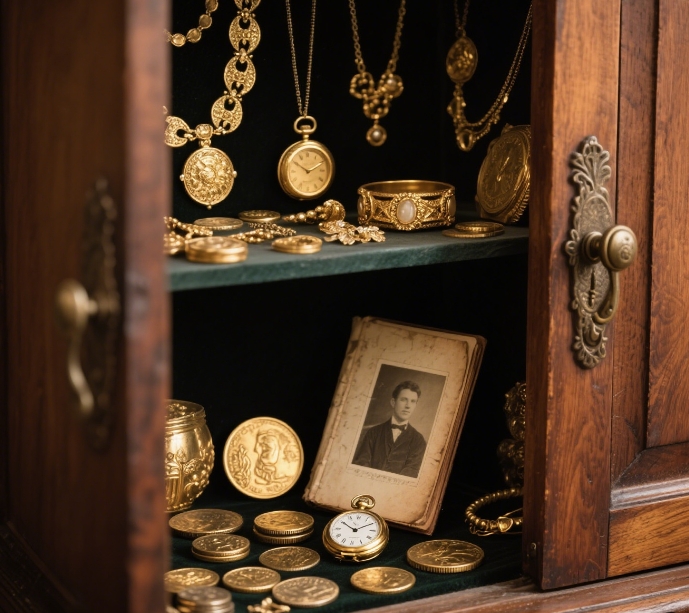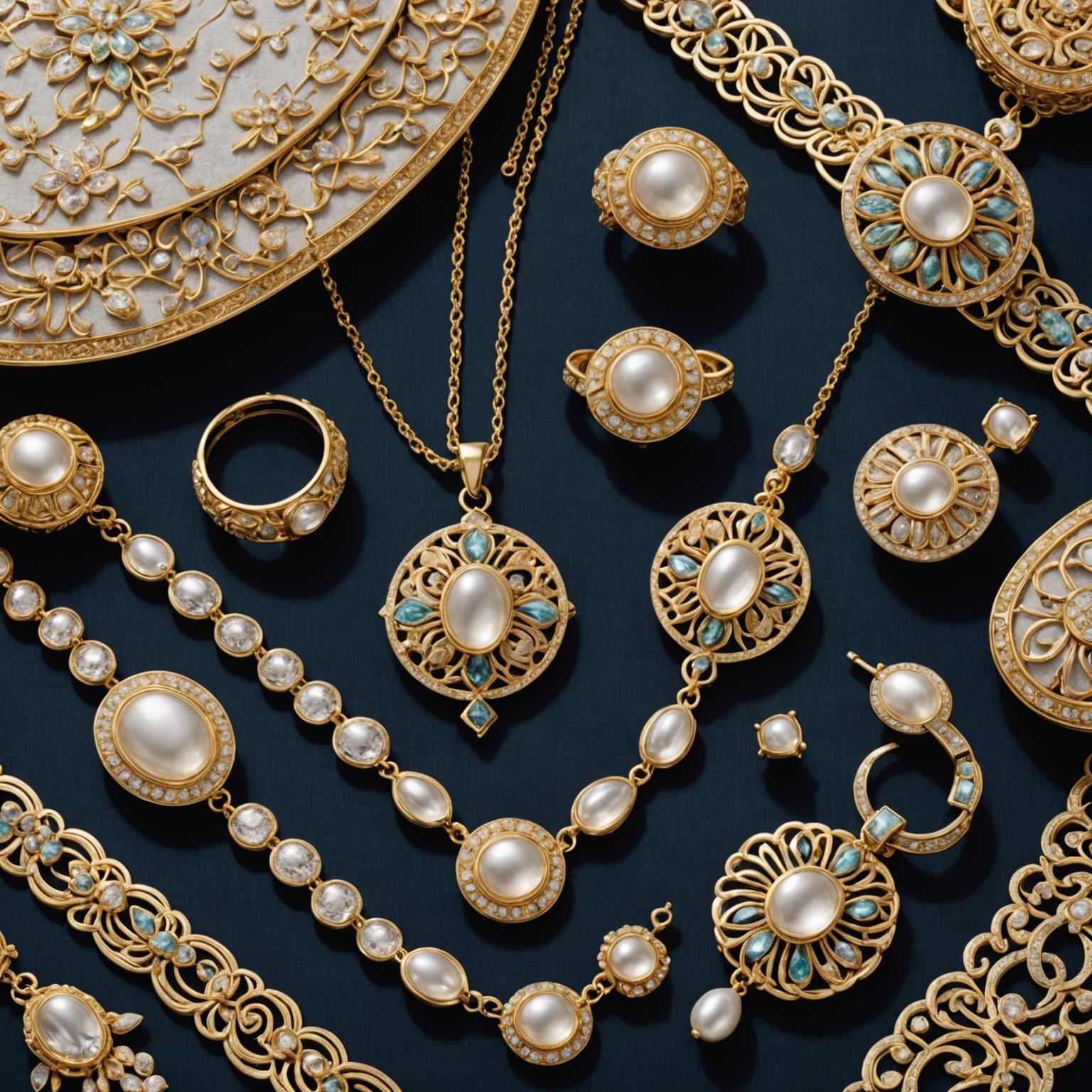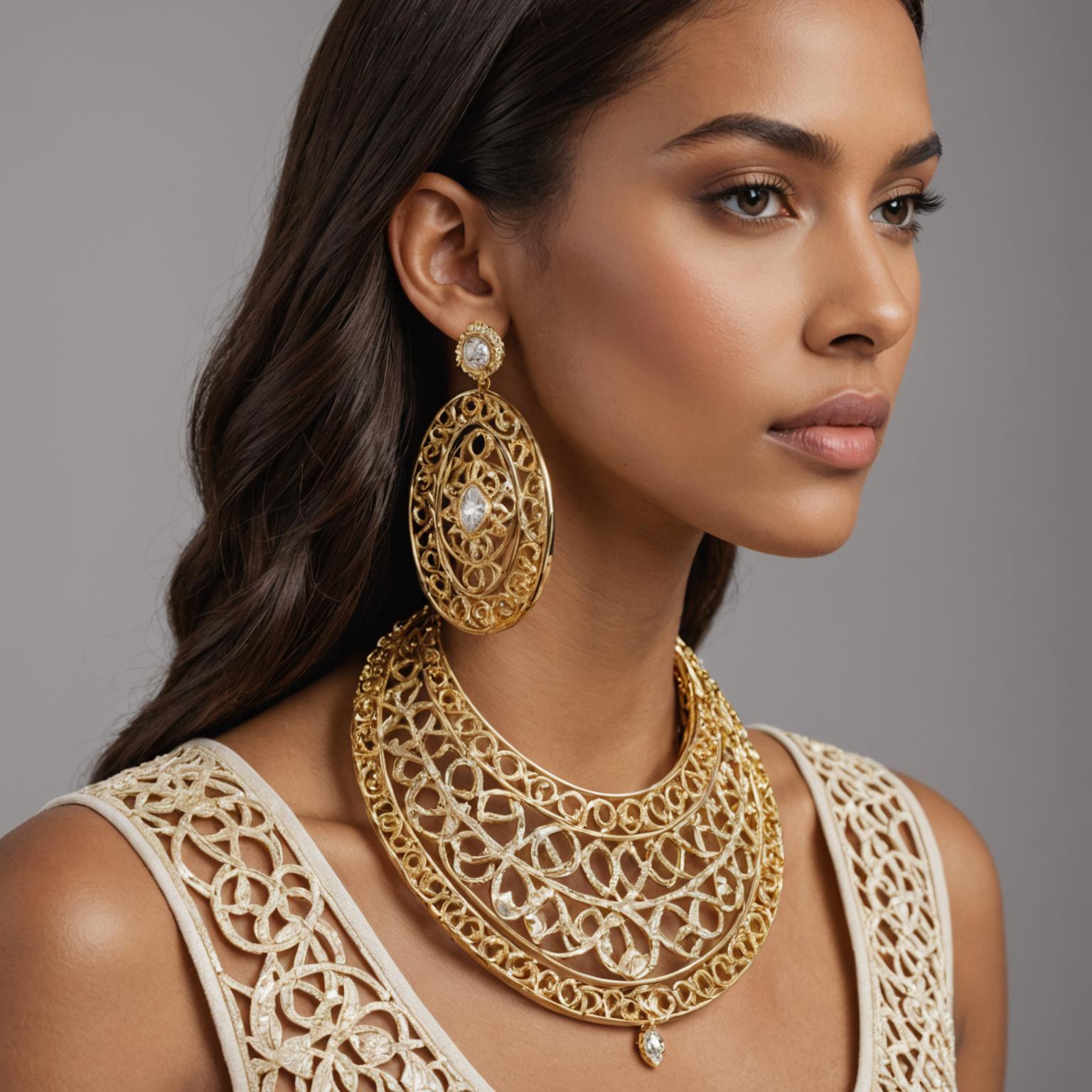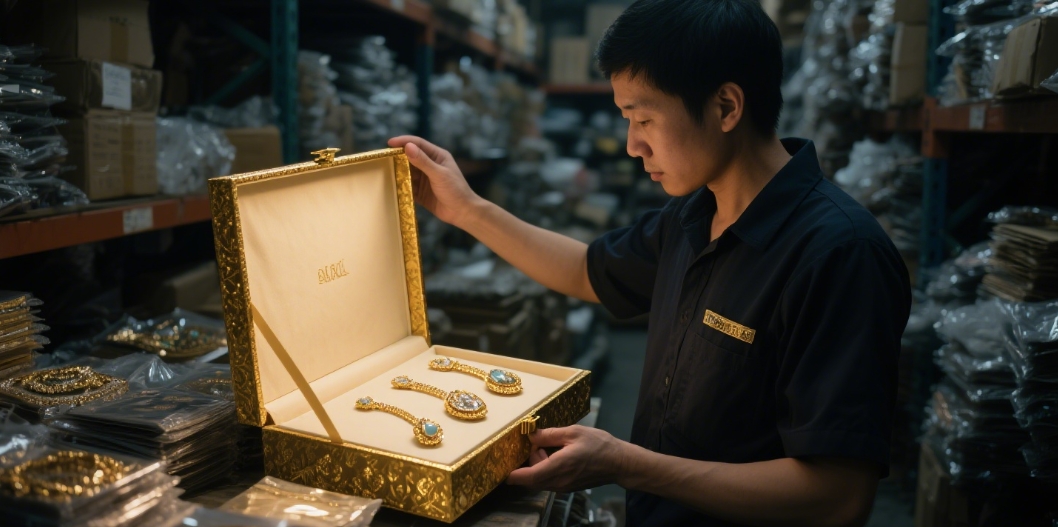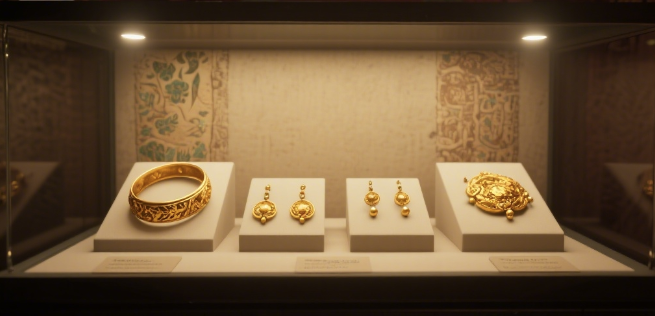
In the gold and silver exhibition hall of the Palace Museum, a set of gold-plated jewelry from the Tang Dynasty made me stop for a long time - the gold bracelets with tangled branches are glowing with warm luster, and the gold earrings with pearls are hanging with fine light spots, which is a wonderful response to the golden four-piece set displayed in a modern jewelry store. This set of "golden combinations" composed of necklaces, bracelets, earrings and rings has never been a simple decoration, but a cultural symbol flowing in time.
Looking back at history, the prototype of the golden four-piece set has appeared as early as ancient times. The golden bracelets (bracelets) unearthed in the Han Dynasty often appeared in pairs with gold rings (earrings). At that time, gold was exclusive to the royal aristocrats, symbolizing power and honor; the open atmosphere of the Tang Dynasty made gold ornaments prosperous, and craftsmen integrated engraving and filigree craftsmanship into the design. The treasure pattern on the gold necklace and the auspicious beast pattern on the gold ring became a microcosm of the atmosphere of the prosperous Tang Dynasty. By the Ming and Qing Dynasties, the "three golds" became popular among folk marriages, and the exquisite wealthy families would add earrings to this basis to form a four-piece set, meaning "peace of four seasons" and "perfection of all directions".
Today's golden four-piece set is still continuing this cultural gene. Many brands use intangible cultural heritage filament craftsmanship for necklace pendants, and use gold threads as thin as hair to weave peony and lotus patterns; ancient gold bracelets retain the matte texture, replicating the round shape of the "peace bracelet" in the Qing Dynasty; even the simple plain gold ring hides the oriental aesthetic of "no pattern is better than pattern". When young girls wear such four-piece sets to attend weddings or appear on important occasions, they not only shine with gold, but also carry the expectations of their ancestors for a better life, which is the most intuitive expression of cultural confidence.
The luster of gold will not fade with time, just like the cultural memories that are settled in gold jewelry. From the solemnity of the Han Dynasty, the gorgeousness of the Tang Dynasty, to the diversity of the modern era, the golden four-piece set has always changed, but it has always remained unchanged - it is always people's yearning for nobility, auspiciousness and eternity, and a cultural mark that is still vivid through thousands of years.x



